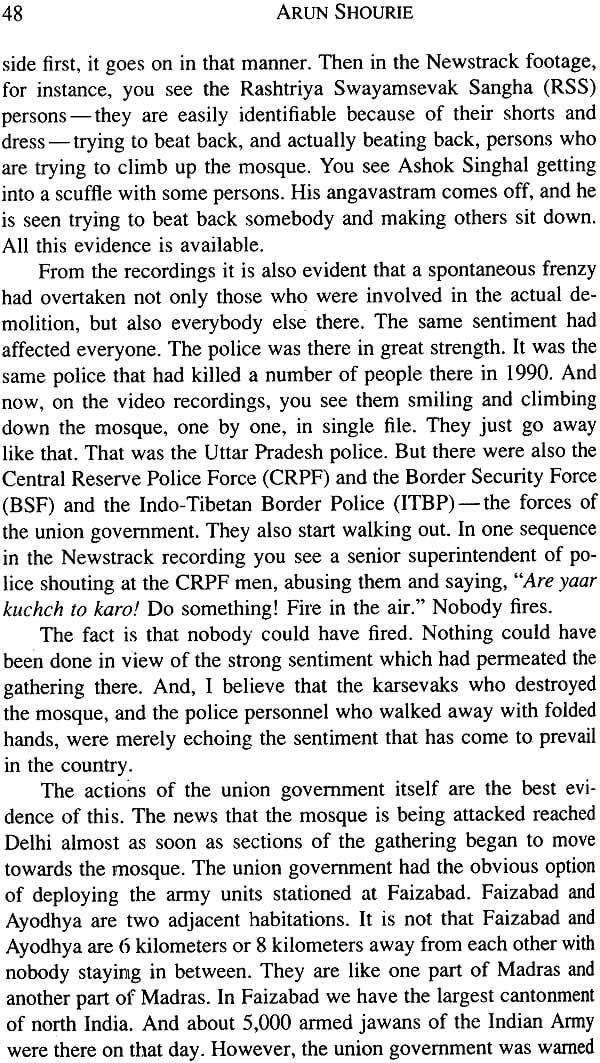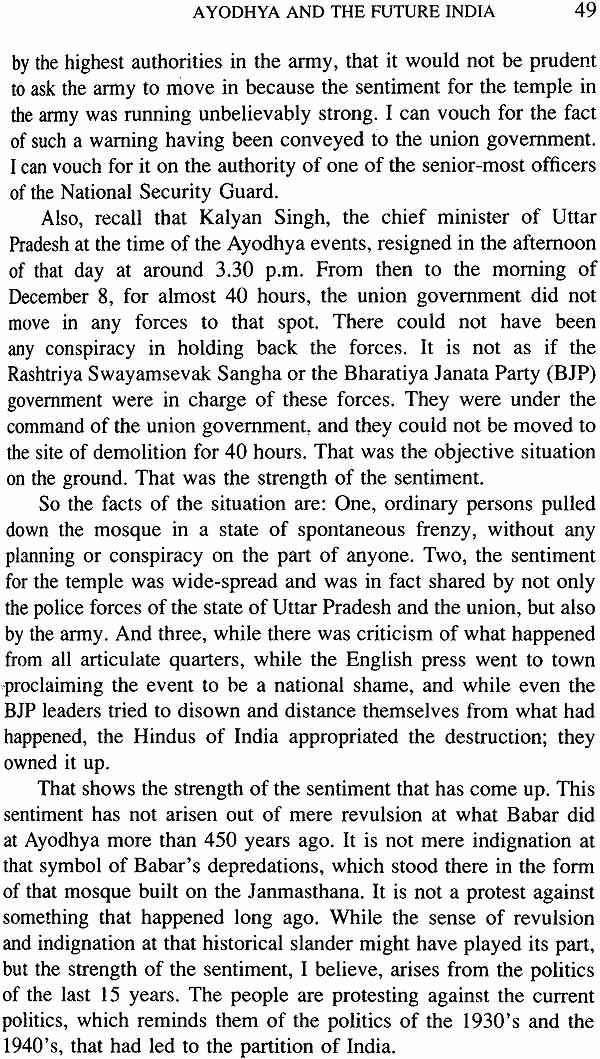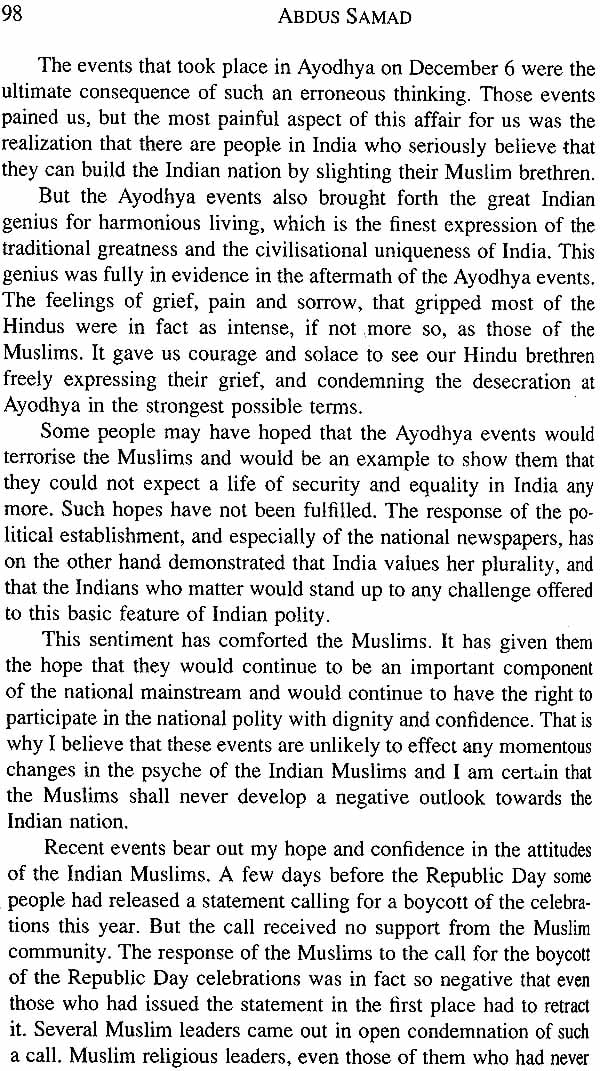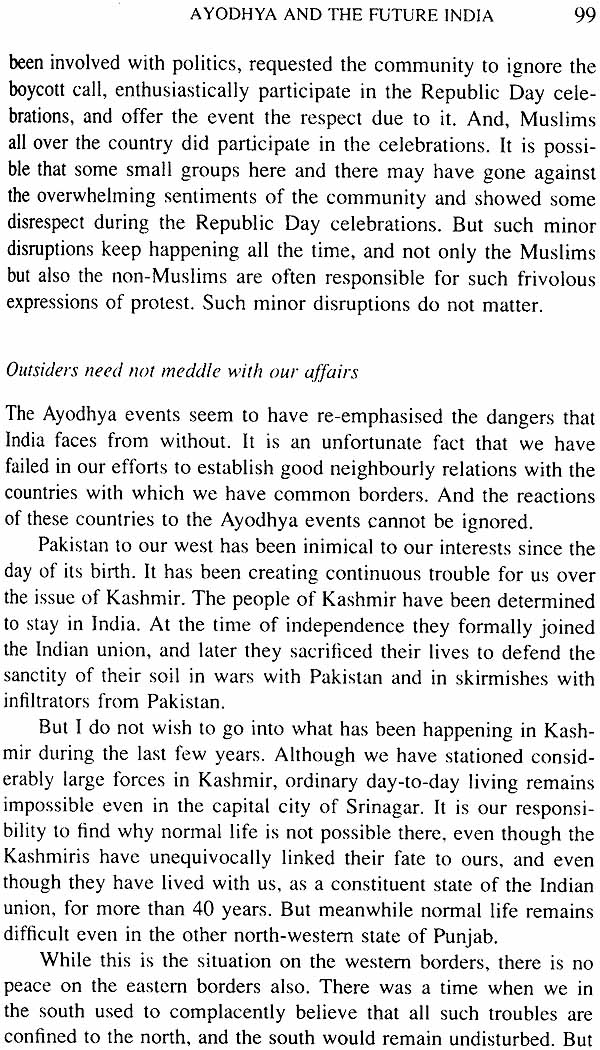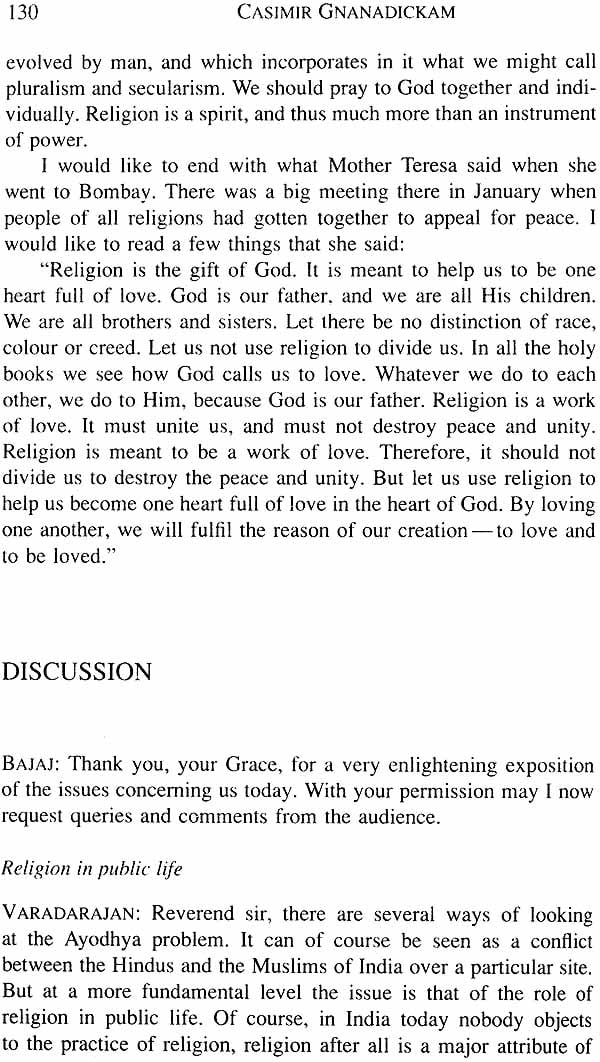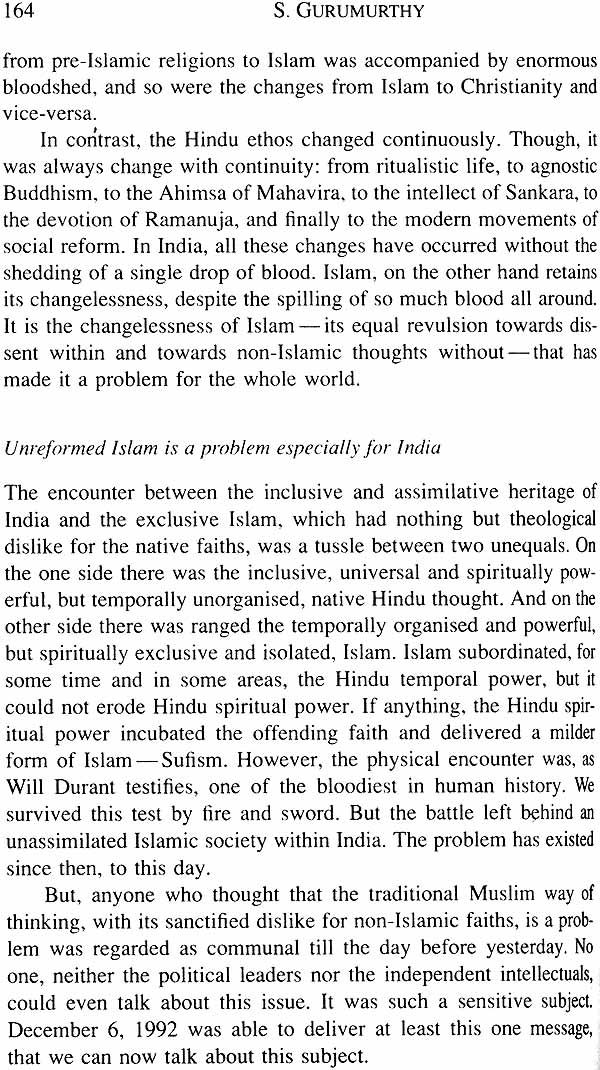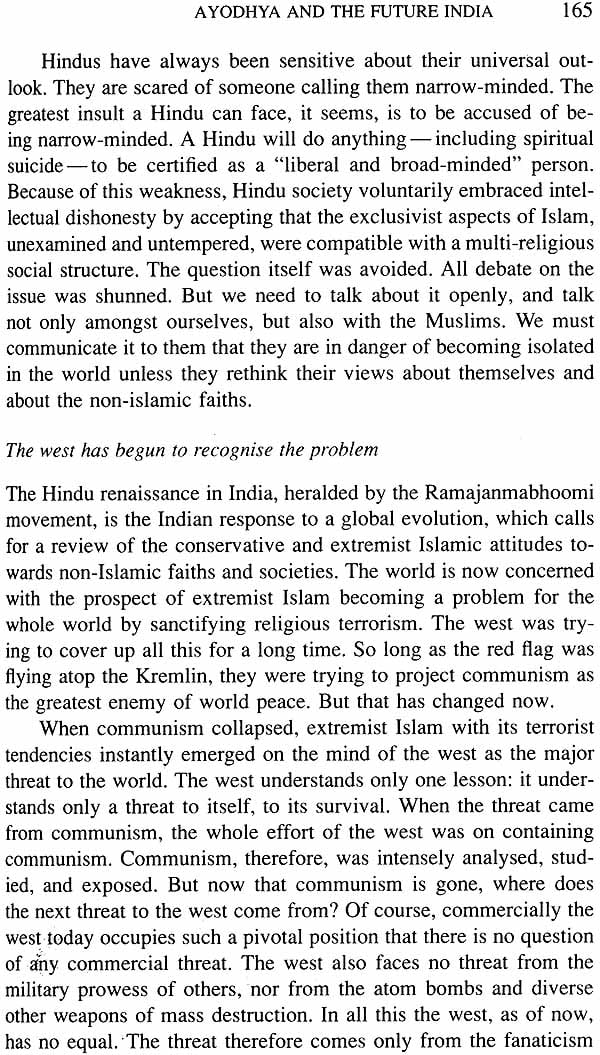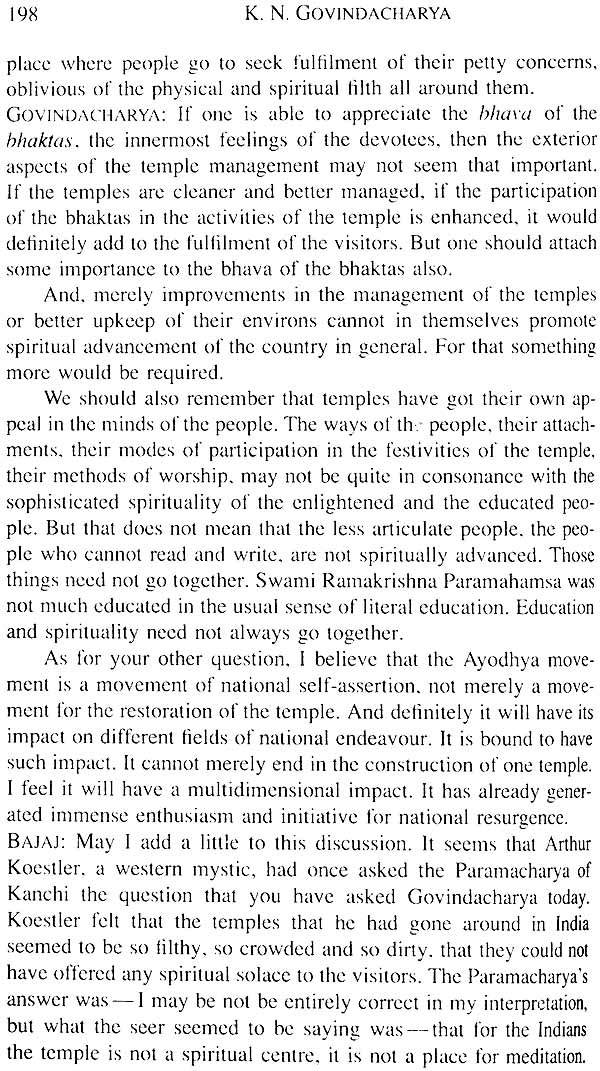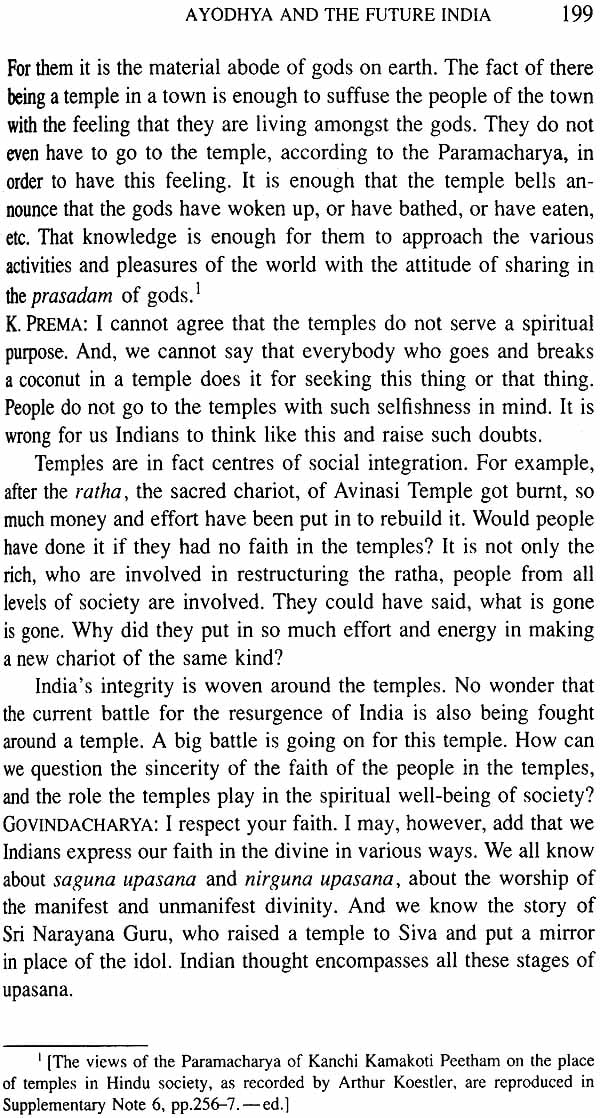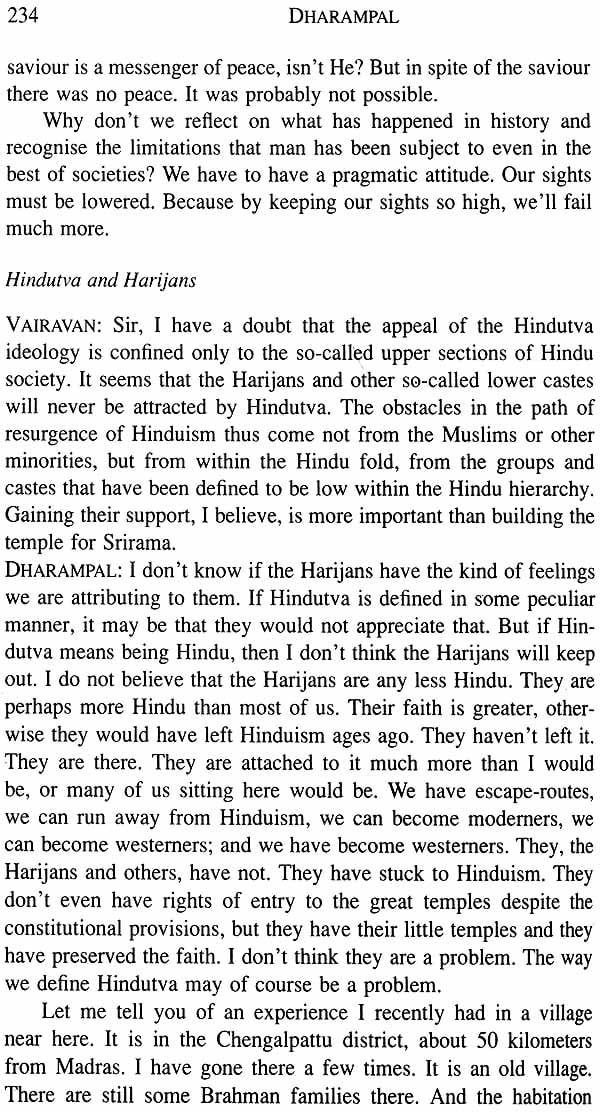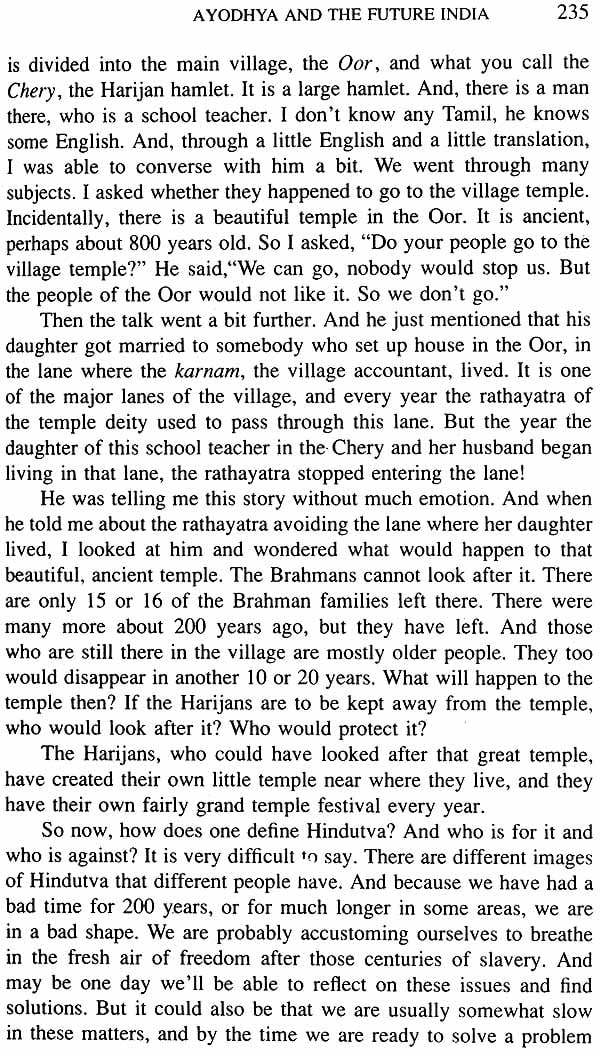
Ayodhya and The Future India (An Old Book)
Book Specification
| Item Code: | NAK251 |
| Author: | Jitendra Bajaj |
| Publisher: | Center for Policy Studies, New Delhi |
| Language: | English |
| Edition: | 1993 |
| ISBN: | 8186041036 |
| Pages: | 269 |
| Cover: | Paperback |
| Other Details | 8.5 inch X 5.5 inch |
| Weight | 440 gm |
Book Description
The Ayodhya events signify the beginning of the end of a phase of Indian history. The republic, constituted as a successor regime to the British and the Mughals, no longer seems so viable. And, it is time to begin exploring the future directions of Indian polity.
Having taken over the levers and the trappings of imperial power in India the new ruling elite quickly convinced itself that the court-houses, the circuit bungalows and the magisterial residences built by the British, as also the various manuals and codes of departmental and courtly procedure, created by them and the earlier Mughal rulers, were essential to the governance of the Indian people. Even the symbols of Indian defeat became the treasured inheritance of the Indian state.
The Ayodhya events have broken the reverie. They have come as a rude jolt to many who had begun to imagine that they were now in a position to do what the conquerors of the past had failed to accomplish: To make the people of India forget their intrinsic Indianness, their essential rootedness in the Indian civilisation. The Ayodhya events' have shown that the people of India have not given up. They continue to keep their own counsel about what is worth preserving in the Indian past and what needs to be forgotten. And, thus they have forced us to begin thinking beyond merely finding ways of somehow carrying on with the mantle of the dead and departed imperialists.
In the talks and discussions collected in this volume leaders of different sections of Indian opinion engage in an exploration of the essential questions facing the nation in the context of the Ayodhya events, with great concern and transparent frankness.
A solitary colonial bungalow standing on a high platform amidst a sprawling compound forms one of the persistent images of my childhood. The boundary wall surrounding the compound was spiked with sharp pieces of broken glass. The rooms were generally covered from view by thick chicks hanging over the arched verandas that ran all around the platform. From the school building adjoining the bungalow we could sometimes catch a glimpse of the interiors when the chicks were rolled up to reveal a large number of double panelled doors and windows, all painted a sanitary white, opening into the verandas. Occasionally, we could also see someone luxuriously reclining on the white painted plank swing cooled by the breeze from a huge pedestal fan. More often, however, we only saw the gardeners tending the green lawns, manicuring the hedges and shrubs, and watering the flower and vegetable beds with their bucket sprinklers. And during the winter we wistfully looked at the large white dahlias and myriad other flowers that bloomed in the compound.
The bungalow stood at the head of a small town of around three thousand households. The town itself was of recent origin, established in the early twentieth century. It was neatly laid out, with two main bazaars running across the length, and a third, perpendicular to the other two, cutting the town in the middle. And there were five or six residential streets all of which ran geometrically straight either along the length or the width of the town. Houses along the outermost streets were relatively and uniformly tall, facing inwards to the street. The backs of these houses thus formed a closed perimeter wall. Entrance to and exit from the town were possible only from the ends of the three main bazaars and two of the bigger streets
All these openings were provided with massive iron gates, which were closed and locked early at night and opened at the crack of dawn. The bungalow of our school day musings was not a part of the town. It stood just outside the main gate and seemed to overlook the town laid out at its feet.
The bungalow was the official residence of the local magistrate, the officer representing the majesty of the government in that small town and its surrounding villages. Opposite to the bungalow there was the court complex; adjoining it the sub-jail and beyond that the civil hospital and the post office. These buildings together constituted what in a bigger town would have been known as the "civil lines". But all of these buildings had been more or less taken over and subdued by those who, not too long ago, were barred from these precincts as the despised "natives". Only the magisterial bungalow retained its imperial majesty and aloofness.
The bungalow seemed to interact with the town only through the agency of the police chowky, which was built into the main gate, symbolically straddling the town, with one half of it protruding on one side of the gate and the other half on the other side. On our way to and from the school we had to pass this chowky, and passing by we often saw men tied down in grotesque positions and heard heavy thuds of bestial beating and the helpless cries of pain. Sometimes the men in the chowky were among the known people of the town. At one time there were young neighbours caught at a game of cards. At another it was the old venerable grandfather of a fellow student brought in with his hands tied to the back for daring to brew his own wine. And at yet another time it was a tall, young and highly talented cabinet-maker being reduced to pulp for being involved in some little scuffle.
But this, we were told, was only a chowky a police outpost - used for mere minor chastisement. The really criminal types were taken to one of the two police stations falling under the jurisdiction of our magistrate and located in two of the bigger villages of the neighbourhood. And for the recalcitrant ones there were special interrogation centres in faraway cities. There were many stories that were told of the horrors visited upon people who had had the misfortune of being taken to the police stations in the neighbourhood or to the faraway interrogation centres. To our young minds the bungalow and the police chowky represented another world, a world far removed from the ordinary day to-day world of the town and its inhabitants. The policemen, of course, were a different. alien people, not governed by the usual norms of behaviour and the sense of dignity amongst the people of the town. And once when one of the neighbours was introduced as a policeman working in some distant police station we just could not believe it. How could a policeman be one amongst us?
And, the manicured lawns, the dahlias, the gardeners with sprinklers, the chicked verandas and the swings in the magisterial bungalow seemed very distant from the bone-dry patches of dust and the thatched sheds that often used to serve as our classrooms in the school. The sanitary white of the bungalow and the luxuriant green of its compound had little in common with the government school where we raised a collection to buy chalks for the teacher, and brought our individual small pieces of coarse cloth to spread on the bare floor. Not only did the school have no desks, it could not even afford to buy fresh rolls of jute-sacking that had once served as seats for the children. And therefore we picked up small pieces of old cloth from our homes, stuffed these in our school-bags and carried them to school everyday.
For us, in our childhood, this separation between the world of the magisterial bungalow and that of the town seemed part of the natural order of things. It seemed natural that the universe was formed of two distinct worlds: a rarefied and powerful world of the rulers, and the ordinary, humdrum and powerless world of the ruled. And it also seemed natural that the rulers lived in distinctive isolated bungalows, wore different kinds of clothes, and spoke a different language. We were, of course, told that if we studied well and worked hard we could gain entrance to that other world of the bungalow. But that world was so different from anything we knew that it is doubtful whether the prospect of becoming part of it really meant much to many of us.
December 6, 1992 was a usual sleepy Sunday in Madras. For the last few weeks the newspapers had been writing about frantic activity in Delhi, especially in the corridors and the chambers of the supreme court. There were also reports of the movement of large numbers of karsevaks from distant parts of the country towards Ayodhya. And, of course, two major leaders of the Bharatiya Janata Party (BJP) were closing in on Ayodhya from two different directions in their tumultuous yatras. But all this had been happening often enough. Conflicting pronouncements of the courts, mammoth gatherings of the karsevaks and long yatras of the leaders had taken place so often in the recent past that these had become almost routine. These had in fact come to seem like the coordinated stepping exercises of an army column, where the feet and hands keep moving while the column stays at the same place.
It was therefore not surprising that there seemed nothing unusual about that Sunday in faraway Madras. There was little expectation in the air. The world seemed unchanging. And, expecting nothing, many of us had not even cared to switch on the television or the radio. It was late in the evening, around 6.00 p.m., when one of our colleagues at the Centre brought news of the happenings in Ayodhya. The karsevaks at Ayodhya, we learnt, had in fact decided to take matters into their own hands, and had actually demolished the structure at Ayodhya over which so much effort and emotion had been expended over the last few years.
The world it seemed had indeed changed. The columns that were supposed to stand still, merely parading their hands and feet to the complex commands of judiciary and politics, had decided to ignore the tune and move into battle. And, let it be admitted, our first reaction to this display of unbounded initiative on the part of the Indian people was that of immense relief.
From the tentative ways of Indians in most fields of endeavour during the last four decades, it had come to seem as if long years of bondage had deprived us of the will to think and act on our own. We, it seemed, had become prisoners of the situation in which we found ourselves, and maintaining the situation unchanged, keeping the walls of our prison intact, had become our major concern. In such a situation, any effective action by the people of India was bound to bring a sense of relief to all concerned Indians, even to those who later felt that this particular action was despicable and not in keeping with the Indian character and tradition. At that moment what mattered was the historical grandeur and definitiveness of the action. Thoughts about the morality, ethics and politics of the action were to come later.
The series of talks and discussions collected in this volume were held in the wake of this momentous event in current Indian history. We, in the Centre for Policy Studies at Madras, are convinced that this event marks a definite turning point in Indian history. The form and pace of the unfolding of this new orientation however will depend upon different sections of the Indian people coming together and sharing their vision of the future India. With this in view, we approached the leaders of different sections of opinion in Madras and requested them to come to the Centre and talk and share ideas about their perceptions of the current situation and the emerging future.
It is perhaps a measure of the concern about the future polity of India generated by the events at Ayodhya, that everyone we approached readily agreed to speak and participate in these discussions. Most of them in fact were keenly sensitive about the need for establishing a dialogue and many insisted, during and after the meetings, that such dialogue should be continued at different levels and different places.
The representatives of the so-called secular opinion, however, did not seem to share in this general desire for continuing dialogue, and a renowned historian of modern India in fact told us that the country had gone to dogs and there was nothing left to talk about. He even suggested that people like him did not really belong here, and therefore it was best that they kept away from such discussion.
Arun Shourie happened to be in Madras at the beginning of January to speak at a public meeting in the city and he spared an evening to open the series. Abdus Samad found time from his very busy schedule among his constituents to not only speak at the Centre but also answer wide ranging questions on many sensitive Issues. S. Guhan prepared and presented an exhaustive review of the history of the Ayodhya controversy. The Most Reverend, Casimir Gnanadickam, the Archbishop of Madras-Mylapore, managed to fit in a visit to the Centre between his various engagements and patiently answered questions that covered a vast field ranging from international politics to theology. S. Gurumurthy presented his understanding of the civilisational interaction between India and the semitic traditions of the west, and the further unfolding of this interaction in the future. K.N. Govindacharya took pains to present a comprehensive picture of the future India as he sees it in the wake of the Ayodhya movement. And, Sri Dharampal, who in fact had inspired this series by his persistent insistence that to understand the significance of the Ayodhya events it is imperative to listen to and interact with different sections of Indian opinion, concluded the series with a talk of great intensity and civilisational sweep.
The meetings were held on the open terrace of the Centre and every talk was followed by hours of relaxed and generally courteous discussion. Participants in the meetings often numbered around a hundred, and the number and diversity of questions and issues that were raised left some of us with an uneasy feeling that we are a society where nothing seems to have been resolved, where all is- sues of significance to the functioning of the polity remain open. But it should perhaps be counted among one of the blessings of the Ayodhya events that all these unresolved issues have been brought into the open.
We are thankful to the speakers whose ready willingness to spare hours of their time made these discussions possible. We are equally thankful to the large number of participants who attended these meetings and helped in unravelling various facets of the current situation through their perceptive comments and questioning.
Contents
| Preface | vii |
| Acknowledgements | xi |
| Introduction | 1 |
| The Buckling State | 47 |
| Dark Forebodings | 71 |
| Coming Together | 93 |
| Building Bridges` | 119 |
| The Inclusive and the Exclusive | 151 |
| Future vistas | 181 |
| Undamming The Flow | 213 |
| Supplementary Notes | 239 |
| Contribution and Participants | 259 |
